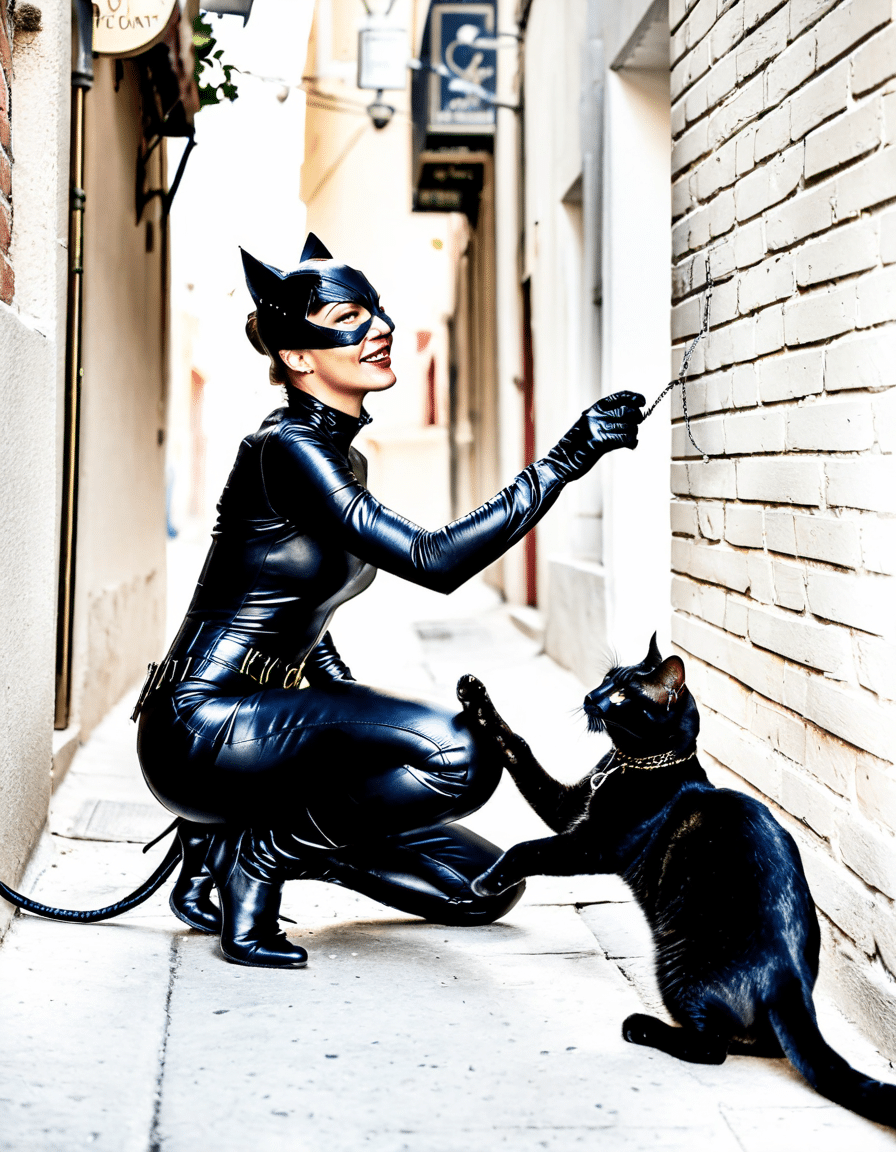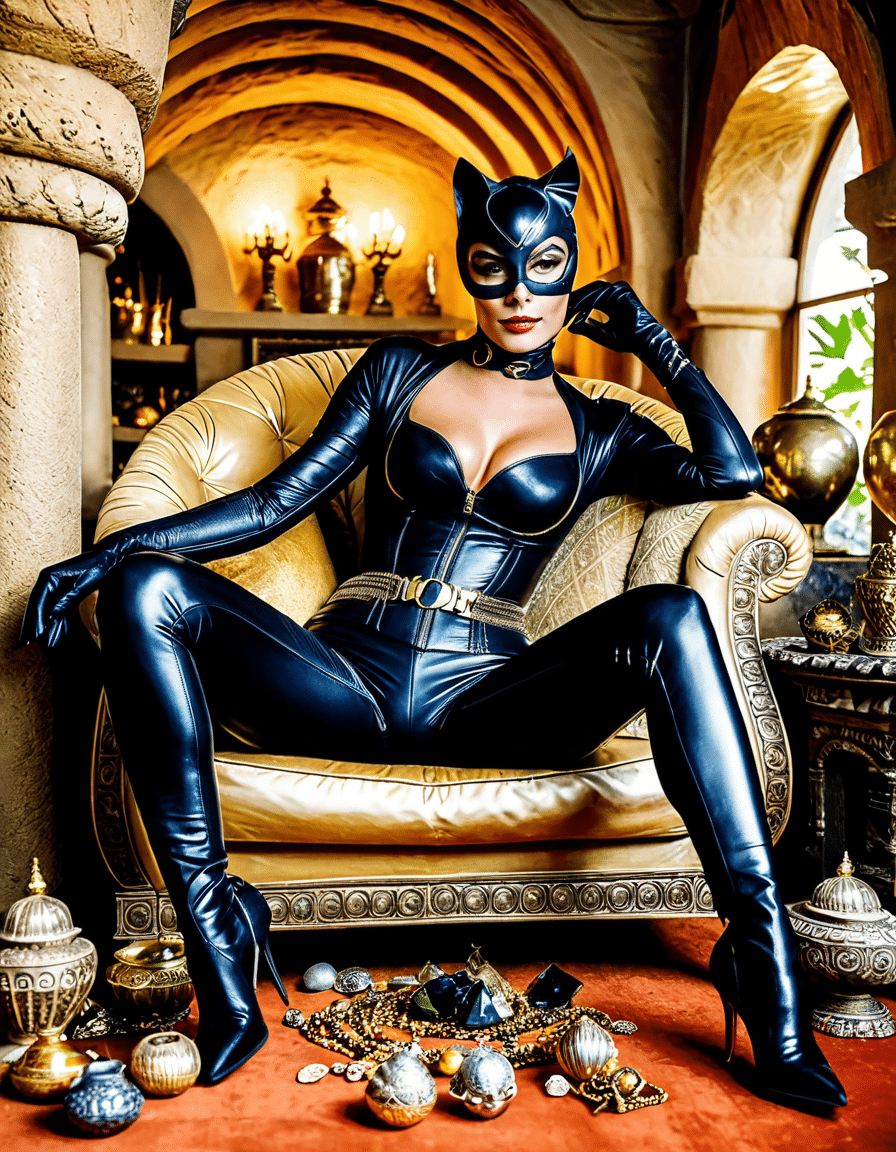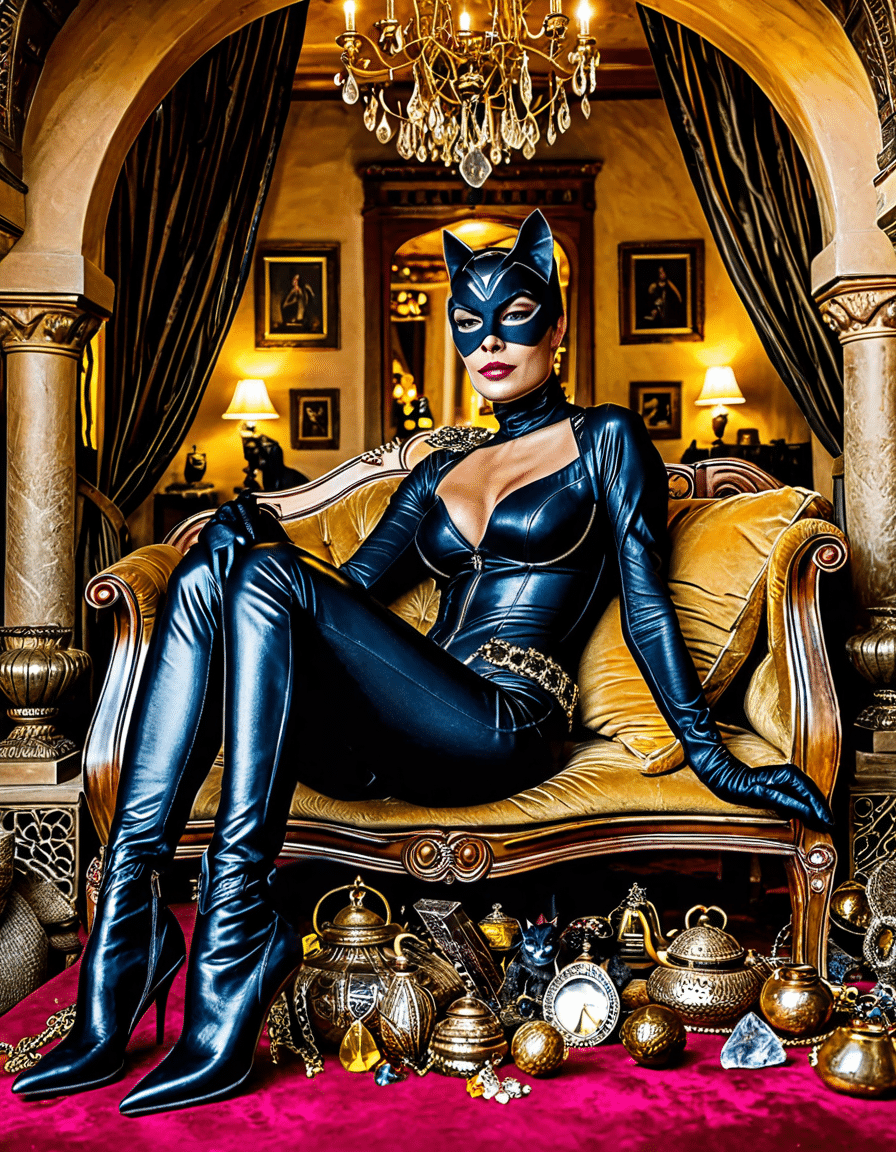Catwoman has long haunted the shadows of Gotham City, captivating audiences with her charm, cunning, and complexity. Emerging from comic book pages in 1940, Catwoman has transformed from a mere villain in Batman’s universe to a multifaceted antiheroine who reflects the complexities of female identity in media. This character isn’t just a simple felon; she embodies seduction and independence, challenging the norms of her comic book peers like Wonder Woman. In this article, we will explore the evolution of Catwoman, iconic portrayals, her seductive allure, cultural significance, and what the future holds for this timeless character.

The Evolution of Catwoman: From Villain to Antihero
Catwoman first appeared in the comic book world as a sly opponent to Batman, stealing not only jewels but also the hearts of readers. Over the decades, her character has undergone significant changes, particularly visible in key arcs like “Batman: Year One” (1987) and “Catwoman: When in Rome” (2008). These narratives delve into her dual identity, showcasing her relationships that both entangle and empower her.
In “Batman: Year One,” Catwoman transitions from a traditional villain to a complex antihero. She finds herself in the grey area of morality, driven by the need to survive in an unforgiving world. Meanwhile, “Catwoman: When in Rome” highlights her ability to navigate the criminal underworld while simultaneously falling for Batman, showcasing fierce independence just as often as vulnerability.
As her character develops, Catwoman builds tangled ties with both Batman and Gotham’s criminal network. This intricate dance between love and mischief only adds to her beguiling identity as both an ally and an adversary, drawing her fans closer. It becomes overwhelmingly clear that Catwoman is not just a villain; she’s a mirror reflecting both the chaos of Gotham and the dual nature of revenge and redemption.

Top 5 Iconic Portrayals of Catwoman: Analyzing the Best
Catwoman has dazzled audiences time and again, portrayed by a diverse lineup of talent that brings her different nuances to life. Here are five standout interpretations that have solidified Catwoman’s cinematic legacy:
Newmar’s playful take reveals a seductive and campy essence, perfectly capturing the whimsical spirit of the ’60s television series. Fans still fondly remember her distinctive cat-like mannerisms and iconic costumes.
Pfeiffer’s take is often hailed as a defining moment for Catwoman, embodying both strength and vulnerability. With sharply delivered lines and mesmerizing scenes, her performance adds significant depth, making her a relatable tragic figure.
While the movie didn’t fare well critically, Berry’s embodiment of Catwoman introduced new aspects, such as fierce independence and empowerment. Her style emphasized modern themes around self-actualization, setting a new tone for women in superhero films.
Hathaway brought elegance to her role, blending charm with formidable survival instincts. Her performance showcased Catwoman’s moral ambiguity as she weaved through a high-stakes narrative full of tension.
Kravitz has redefined the character for a new generation, imbuing her with empathy and a distinct complexity. This recent interpretation emphasizes Catwoman’s resilience and echoes contemporary conversations around femininity in the age of social change.
The Allure of Catwoman: Seduction and Feminine Power
Catwoman embodies a fascinating fusion of seduction and empowerment. Unlike Wonder Woman, who symbolizes unwavering strength and justice, Catwoman revels in the moral grey areas of her existence. This stark contrast between the characters highlights Catwoman’s unique approach to femininity and power.
Her sexuality is significant, acting as both weapon and armor. It’s not just about allure; it’s about intelligence and mastery over psychological manipulation. Catwoman uses her cunning to bend situations to her advantage, whether flirting with rival criminals or outsmarting superheroes.
As we analyze her character, it’s clear that Catwoman’s mastery of seduction goes beyond attraction. She exemplifies how femininity can be a source of power, driving the narrative while simultaneously embodying a struggle against societal norms of women’s roles in both comics and film.
Cultural Significance: Catwoman vs. Wonder Woman
While both Catwoman and Wonder Woman have captured hearts, they serve as contrasting symbols of female empowerment. Wonder Woman presents an archetype of strength, leadership, and justice. In contrast, Catwoman embodies complexity, showcasing the interplay between villainy and heroism.
This difference is critical in feminist interpretations of both characters. Catwoman openly defies traditional femininity, finding strength in her flaws and choices, while Wonder Woman upholds an ideal of valor and moral clarity. This divergence opens discussions about how female characters can exist outside prescribed roles, enriching the narrative landscape.
Pivotal story arcs and film adaptations amplify these themes. From Catwoman’s audacity in stealing from the corrupt to Wonder Woman’s quest for peace, the phenomenon highlights the different paths women can take in their narratives. Ultimately, these characters invite modern audiences to better understand the complexities of female representation in popular culture.
The Future of Catwoman: Trends and Adaptations
Looking ahead, Catwoman’s resurgence in various media—from graphic novels to animated series—is becoming evident. Given the superhero genre’s trend toward multi-dimensional characters, Catwoman’s narrative continues to grow richer and more relevant.
Upcoming projects cast a spotlight on potential adaptations, including rumors of solo films that may further explore her complexities. The rise of streaming platforms offers an opportunity to dive deeper into her character, showcasing themes like empowerment, sexuality, and morality that resonate with audiences today.
As storytelling evolves, Catwoman stands poised to capture a new generation’s imagination. She will likely continue to challenge conventional narratives, recontextualizing notions of femininity while solidifying her position as a cultural icon.
In summation, Catwoman remains a monumental figure in the antihero space. Her intricacies and transformations reflect an ongoing evolution in female storytelling. Here’s to the thrilling ride ahead as Catwoman’s charm and endless allure continue to challenge and captivate us, blurring the lines between hero and villain. With each new chapter, it’s clear that our enigmatic antihero is just getting started.
Catwoman: The Enigmatic Antihero and Icon of Seduction
Whiskers of Wisdom
Did you know that Catwoman, whose real name is Selina Kyle, first appeared in Batman #1 back in 1940? She’s been captivating audiences ever since, representing complexity and charm. Her character’s development mirrors our societal changes, making her a timeless figure in pop culture. Speaking of timeless experiences, if you ever find yourself in Paris, check out some of the most enchanting hotels in Paris, France—it’s a city that captures its own kind of seductive mystery, just like Catwoman herself!
Moreover, the character has evolved from a simple thief to a multifaceted antiheroine, navigating the blurred lines between good and evil. Actress Eartha Kitt, who famously portrayed Catwoman in the 1960s “Batman” series, once stated that her rendition was inspired by the fierce independence featured in the hud house structures of the time, showcasing a symbolic break from convention. It’s fascinating how those designs reflect just how free and powerful the character has become.
An Icon Reimagined
Over the years, Catwoman has inspired numerous adaptations across various media, including iconic portrayals in film by actresses like Michelle Pfeiffer and Anne Hathaway. Michelle’s portrayal in “Batman Returns” was particularly noted for its captivating blend of seduction and strength, reminiscent of the allure found in Stardust. And speaking of striking performances, actress Rutina Wesley has shown that fierce independence often embodies the spirit of Catwoman, sparking interest in strong female-led narratives across cinema.
The character also connects to wider film themes that we see today. The journey from villainy to antihero status is becoming more and more common in modern storytelling, akin to Spike Lees trendsetting narratives that capture the audience’s spirit. Just as Catwoman mixes mischief with redemption, many characters in contemporary films reflect similar dualities, embodying flaws and virtues. This interplay of black and white keeps viewers hooked, allowing them to explore the gray areas of morality—just as Catwoman does.
Catwoman’s Legacy
Even outside of comics and film, Catwoman’s influence extends to pop culture, culminating in diverse merchandise, from high-end fashion to quirky collectibles. And, like the way “Furiosa: A Mad Max Saga” rejuvenated interest in rogue warriors, Catwoman has bridged gaps between different interpretations of heroism, making her a model for empowerment. Every time she slinks onto the screen, dressed to the nines, she embodies a spirit of rebellion and allure—a lesson easily embraced by aspiring heroines.
And if you think about the duo’s antics, Catwoman and Batman’s dynamic feels akin to the themes of freedom found in Young Guns. Both explore the stark realities of choosing one’s path and owning the consequences. Catwoman embodies a seductive independence, challenging norms and bending rules while reflecting our quests for acceptance and identity. So, next time you see her glide across rooftops, remember: she’s not just a thief; she’s a symbol of how the interplay between darkness and light can create a captivating tale!





